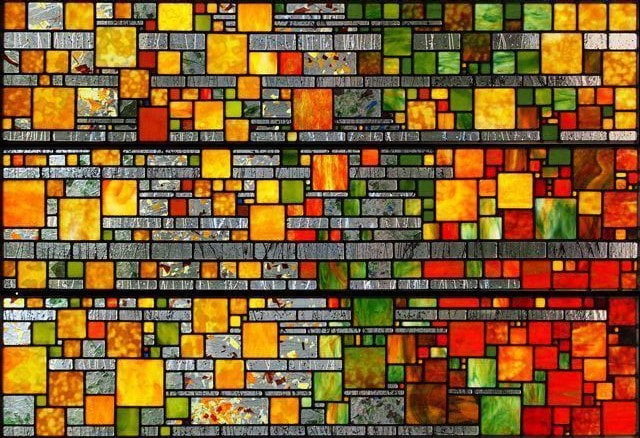n
Yogi Berra
In deductive tasting, the sensory evaluation sequence when one gathers as information about a wine’s appearance, aroma, and palate is only part of the equation. What’s equally important, arguably even more important, is to be able to put all the information together in a meaningful way to come up with a logical conclusion. To point, many times I’ve sat across a table from a student listening to them describe a wine in detail only to, in the words of the all-knowing Bugs Bunny, take a left turn at Albuquerque with a conclusion that makes absolutely no sense. It’s as if the student either didn’t listen to themself while describing the wine or they couldn’t connect the dots and come up with a grape and region that matches the information found in the glass.
Enter the decision matrix. The matrix is a series of mini if-then evaluations that a taster can use when examining a wine to help to come up with a good conclusion. For example, looking at a glass of red wine that’s lighter in color can quickly build expectations of a thinner-skinned grape variety grown in a cooler climate with red fruit dominating nose and palate as well as the finished wine having less alcohol, higher natural acidity, and moderate tannins. You get the idea.
While there are exceptions to all the so-called rules below, the matrix will provide a foundation for you to build on. Remember that there is no replacement for knowing key markers for classic grapes and wines. Mastery of these is absolutely required to become an experienced taster. Finally, the matrix is intended as a starting point for anyone to use and then to go on and develop their own personal version. With that, read on, explore, and enjoy.
Sight
Color: White Wines
- Light or pale color:
- Youth
- Cooler climate
- Cooler vintage
- Reductive winemaking
- Lack of new oak aging
- Deep yellow or gold color:
- Warmer climate
- Warmer vintage
- Oxidative winemaking
- Overall age
- Extended new oak aging
- Botrytis-affected fruit
- Extended skin contact
- Green secondary color:
- Cooler climate
- Cooler vintage
- Youth
Color: Red Wines
- Lighter color:
- Thinner-skinned grape
- Cooler climate
- Cooler vintage
- Red fruit dominant wine
- Less overall ripeness of fruit
- Higher natural acidity
- Lower alcohol
- Garnet color:
- Overall age and degree of oxidation
- Oxidative winemaking
- Extended oak aging
- Deeper color:
- Thicker-skinned grape
- Warmer climate
- Warmer vintage
- Dark fruit dominant wine
- Riper fruit qualities
- Lower natural acidity (possible acidulation)
- Higher alcohol
- Possible higher tannin
Rim variation
- Pink or purple color:
- Youth
- Lack of extended new oak aging
- Salmon – orange – yellow – brown:
- Overall level of oxidation
- Oxidative winemaking
- Extended oak aging
- Oxidative grape variety
- Legs/tearing
- Quickly forming, thinner, and quickly moving tears/legs =
- Cooler climate
- Cooler vintage
- Lower alcohol
- Lower dry extract
- Higher natural acidity
- Lack of residual sugar
- Slower forming, thicker, and slower moving tears/legs:
- Warmer climate
- Warmer vintage
- Higher alcohol
- Lower acidity (possible acidulation)
- Higher dry extract
- Possible presence of residual sugar
- Possible fortification
- Staining of the tears in red wine:
- Thicker-skinned grape
- Concentrated wine
- Possible warmer climate
- Higher dry extract
Faults/wine hygiene
- Brettanomyces
- Possible Old World growing region
- High pH wine from warmer growing region
- Minimal winemaking
- Volatile acidity:
- Possible Old World growing region
- Minimal winemaking
Fruit
- Fruit-dominant:
- New World region
- New World style
- Lack of overt fruit:
- Old World region
- Old World style
- Fresh, vibrant fruit:
- Youth
- Lack of oak influence
- Dried or preserved fruit:
- Wine with age
- Abundance of riper fruit:
- Warmer region
- Warmer vintage
- Abundance of tart and otherwise unripe fruit:
- Cooler growing region
- Cooler vintage
Red wine
- Abundance of tart or under ripe red fruits:
- Thinner-skinned grape
- Cooler growing region
- Cooler vintage
- Abundance of darker riper fruit:
- Thicker-skinned grape
- Warmer growing region
- Warmer vintage
Non-fruit characteristics
- Dominant floral notes:
- Aromatic grape (Gewürztraminer, Muscat, Viognier, etc.)
- Herbal-vegetal notes (pyrazines):
- Cabernet Sauvignon family grape including Sauvignon Blanc
- Pepper (rotundone):
- Rhone grape variety (Syrah, Grenache, Mourvèdre), Zinfandel, and Grüner Veltliner for white
Earth-mineral qualities
- Pronounced earth and mineral qualities:
- Old World region
- Old World style
- Lack of overt earth and mineral qualities:
- New World region
- New World style
Oak
- Dominant oak usage:
- New World region
- New World style
- Used or neutral oak character:
- Old World region
- Old World style
Acidity
- Higher natural acidity:
- Cooler climate region
- Cooler vintage
- Lower natural acidity:
- Warmer climate region
- Warmer vintage
- Acidulation/acidification:
- Warmer climate
- Warmer vintage
- New World region
- New World style
Alcohol
- Lower alcohol:
- Cooler growing region
- Cooler vintage
- Possible Old World region or style
- Higher alcohol:
- Warmer growing region
- Warmer vintage
- Possible New World region or style
Phenolic bitterness (white wine)
- Little or no phenolic bitterness:
- Non-aromatic grape variety
- Medium or higher phenolic bitterness:
- Semi-aromatic or fully aromatic grape variety
Tannin (red wine)
- Lower tannin:
- Thinner-skinned grape variety
- Less new oak usage
- Possible cooler climate region
- Higher tannin:
- Thicker-skinner grape variety
- More new oak usage
- Possible warmer climate region
Finish
- Shorter finish:
- Lesser quality wine
- Less complex wine
- Longer finish:
- Better quality wine
- More complex wine
Conclusion
- Old World or Old World style wine:
- Less overt fruit qualities
- More earth and mineral qualities
- High natural acidity from cooler growing region
- Lower alcohol from cooler growing region
- Less new oak usage
- Less winemaking influence
- New World or New World style wine:
- More overt fruit qualities
- Less earth and mineral qualities
- Lower natural acidity from warmer growing region
- Possible acidulation because of warmer growing region
- Higher alcohol from warmer growing region
- More new oak usage
- More winemaking influence
nn


